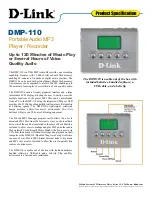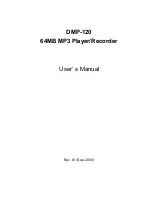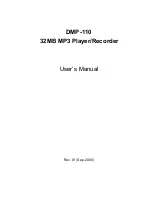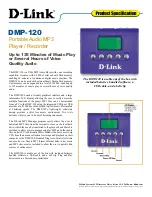
TASCAM CD-400U
3
IMPORTANT SAFETY INSTRUCTIONS
8
RACK-MOUNTING THE UNIT
Use the supplied rack-mounting kit to mount the unit in a
standard 19-inch rack, as shown below.
Remove the feet of the unit before mounting.
CAUTION
•
Leave 1U of space above the unit for ventilation.
•
Allow at least 10 cm (4 in) at the rear of the unit for venti-
lation.
Laser information
This product contains a semiconductor laser system inside the
cabinet and is classified as a “CLASS 1 LASER PRODUCT”.
To prevent being exposed to the laser beam, do not try to open
the enclosure.
Notes on Laser Product
This product has been designed and manufactured according
to FDA regulations “title 21, CFR, chapter 1, subchapter J, based
on the Radiation Control for Health and Safety Act of 1968”,
and is classified as a class 1 laser product. There is no hazardous
invisible laser radiation during operation because invisible laser
radiation emitted inside of this product is completely confined
in the protective housings.
The label required in this regulation is shown at
1
.
1
For USA
CAUTION
• DO NOT REMOVE THE PROTECTIVE HOUSING USING A
SCREWDRIVER.
• U S E O F C O N T R O L S O R A D J U S T M E N T S O R
PERFORMANCE OF PROCEDURES OTHER THAN THOSE
SPECIFIED HEREIN MAY RESULT IN HAZARDOUS
RADIATION EXPOSURE.
Optical pickup
Type: EP-C250L
Manufacturer: GUANGDONG EVER BRIGHT GROUP CO.,LTD
Laser output: Less than 0.30 mW on the objective lens
Wavelength: 792 +8 nm / −12 nm
CAUTIONS ABOUT BATTERIES
This product uses batteries. Misuse of batteries could
cause a leak, rupture or other trouble. Always abide by
the following precautions when using batteries.
• Never recharge non-rechargeable batteries. The
batteries could rupture or leak, causing fire or injury.
• When installing batteries, pay attention to the polarity
indications (plus/minus (+/–) orientation), and install
them correctly in the battery compartment as indicat-
ed. Putting them in backward could make the batteries
rupture or leak, causing fire, injury or stains around
them.
• When you store or dispose batteries, isolate their
terminals with insulation tape or something like that
to prevent them from contacting other batteries or
metallic objects.
• When throwing used batteries away, follow the dispos-
al instructions indicated on the batteries and the local
disposal laws.
• Do not use batteries other than those specified. Do not
mix and use new and old batteries or different types of
batteries together. The batteries could rupture or leak,
causing fire, injury or stains around them.
• Do not carry or store batteries together with small
metal objects. The batteries could short, causing leak,
rupture or other trouble.
• Do not heat or disassemble batteries. Do not put them
in fire or water. Batteries could rupture or leak, causing
fire, injury or stains around them.
• If the battery fluid leaks, wipe away any fluid on the
battery case before inserting new batteries. If the
battery fluid gets in an eye, it could cause loss of
eyesight. If fluid does enter an eye, wash it out thor-
oughly with clean water without rubbing the eye and
then consult a doctor immediately. If the fluid gets on
a person’s body or clothing, it could cause skin injuries
or burns. If this should happen, wash it off with clean
water and then consult a doctor immediately.
• The unit power should be off when you install and
replace batteries.




































